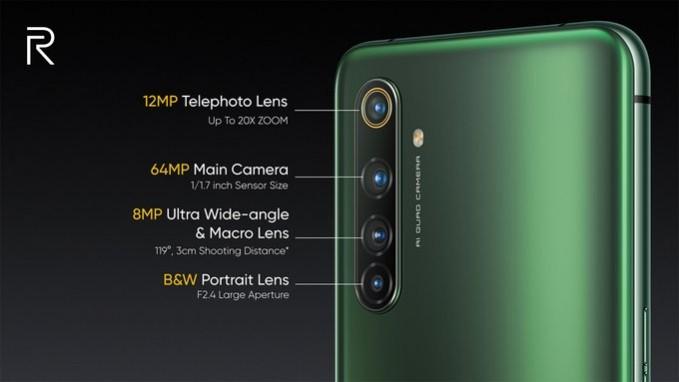India is not 5G ready yet and there no indication of the country reaching the milestone anytime soon. However, that is not stopping the smartphone manufacturers from unveiling the 5G smartphones in the country. Realme launched the country's first 5G smartphone Realme X50 Pro 5G yesterday and iQOO just entered the same space with its iQOO 3 5G smartphones. Both the phones are priced competitively and packed with Qualcomm's latest Snapdragon 865 processor.
These flagship devices will compete with OnePlus 7T Pro in India, which is a few months old now but currently the latest device from OnePlus. We are comparing the two 5G phones from Realme and iQOO with the OnePlus 7T Pro based on their prices, features, and specifications to see which one is the real value for money deal.
iQOO 3 trumps the rest with price
The iQOO 3 is priced at Rs 36,990 for the base model of 8GB RAM and 128GB storage whereas the 8GB/256GB model is priced at Rs 39,990, and the 12GB/256GB 5G model is priced at Rs 44,990. In comparison, the Realme X50 Pro 5G's 8GB RAM and 128GB storage model is priced at Rs 39,999.

Even the base model of Realme X50 Pro with 6GB RAM is priced higher than the iQOO 3 at 37,999, but there's a catch. All the models of Realme X50 Pro are 5G-ready. That's why iQOO 3's 12GB RAM model with 5G connectivity is priced evenly to the Realme X50 Pro's 12GB RAM model at Rs 44,999.
If you don't want to invest in a 5G phone this early, iQOO is the cheaper option. On the other hand, the 2019's OnePlus 7T Pro is priced the highest at Rs 53,999 for the lone model of 8GB RAM and 256GB storage and the OnePlus 7T Pro McLaren Edition with 12GB RAM is priced at Rs 58,999.

iQOO 3 vs Realme X50 Pro vs OnePlus 7T Pro: Screen and cameras
Both the iQOO 3 and Realme X50 Pro sport an HDR10+ certified 6.44-inch FHD+ Super AMOLED screen. However, being a gaming phone, the iQOO 3's screen offers a 120Hz refresh rate, whereas the Realme X50 Pro supports 90Hz refresh rate. OnePlus 7T Pro features an HDR10+ certified 6.67-inch QHD+ curved Fluid AMOLED display with 90Hz refresh rate.
In theory, the iQOO 3's screen is better than the Realme X50 Pro but it is tough to pinpoint -- based on the specs-sheet alone -- whether iQOO 3's higher refresh rate trumps the OnePlus 7T Pro's screen or the OnePlus phone's Quad HD+ resolution beats the iQOO phone. Also, the OnePlus 7T Pro sports a fullscreen with a 16MP pop-up selfie camera whereas the iQOO 3 features a punch-hole screen with 16MP front camera and the Realme X50 Pro features a dual-punch hole screen with 32MP+8MP selfie camera setup.

On the rear, the iQOO 3 sports a quad-rear camera setup with a 48MP + 13MP (telephoto) + 13MP (ultrawide) + 2MP (bokeh) combination. The Realme X50 Pro sports a 64MP + 12MP (telephoto) + 8MP (ultrawide/macro) + 2MP (bokeh) quad-rear camera setup. The OnePlus 7T Pro 5G sports a triple rear camera setup with 48MP + 8MP (telephoto) + 16MP (ultrawide) setup.
iQOO 3 vs Realme X50 Pro vs OnePlus 7T Pro: Other features
The iQOO 3 and Realme X50 Pro are both powered by Qualcomm's latest Snapdragon 865 processor whereas the OnePlus 7T Pro is powered by the last year's Snapdragon 855+ processor. The iQOO 3 comes with gaming features like pressure-sensitive buttons on the side frame and 4D game vibration, which is absent on the other two phones.
The iQOO 3 is backed by a 4440mAh battery with support for 55W Super FlashCharge and the Realme X50 Pro packs 4200mAh battery paired with 65W SuperDart fast charging support. The OnePlus 7T Pro sports a 4085mAh battery with 30W Warp Charge support.

















